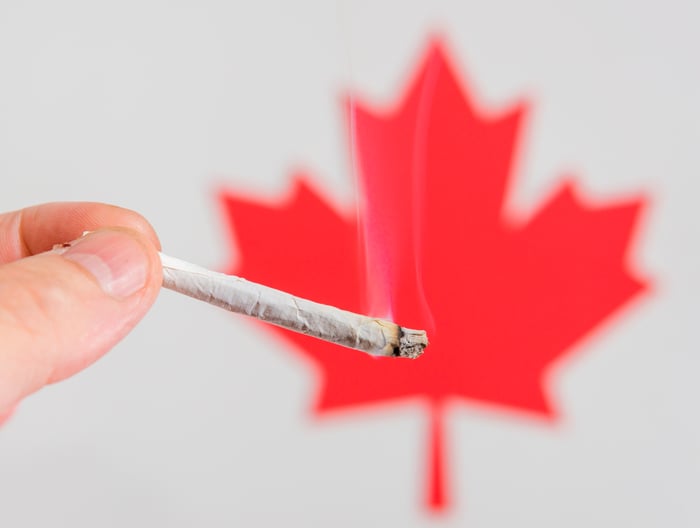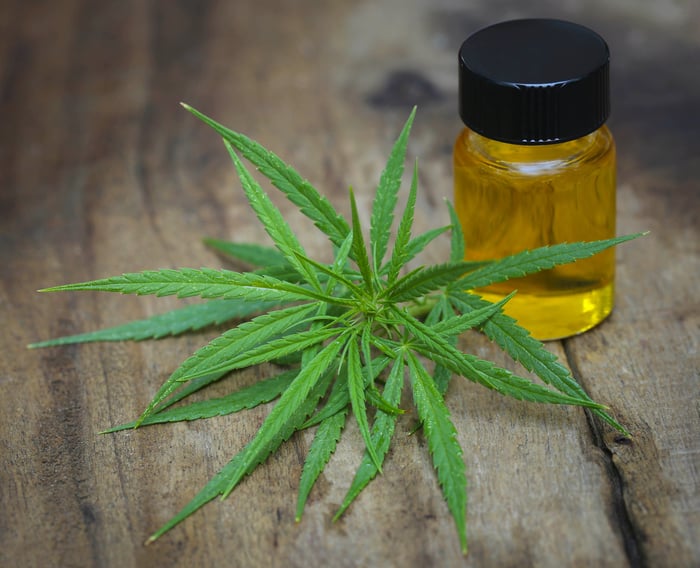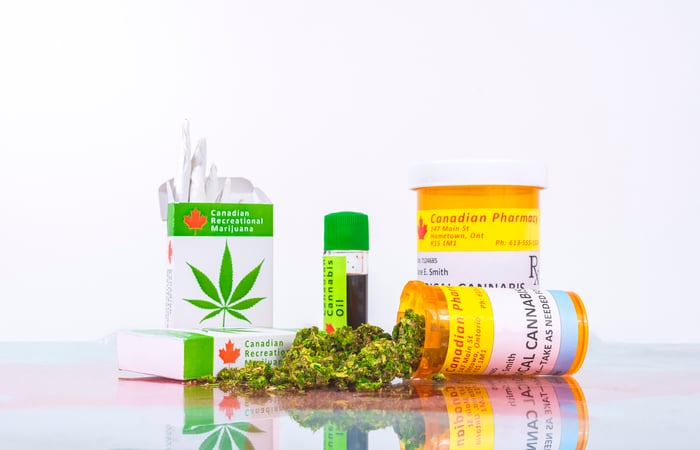Over the last two-plus years, marijuana stocks have been practically unstoppable. In most instances, pot stocks have seen their share prices rise by triple- or quadruple-digit percentages. This bullishness is a direct result of a notable shift in the public's opinion toward cannabis, as well as the expectation of ongoing state- and country-level legalizations.
When it comes to favorability, national pollster Gallup found that nearly two-thirds of Americans support legalizing marijuana in its October 2017 survey. By comparison, support for legalization stood at a mere 25% in 1995, the year before California became the first state to approve the use of medicinal marijuana for compassionate-use patients.

Image source: Getty Images.
With regard to expansion, all eyes are on Canada, which appears to be on the verge of becoming the first developed country in the world to legalize recreational marijuana. A Senate vote is set for June 7, with bill C-45 -- better known as the Cannabis Act -- widely expected to be signed into law shortly thereafter. Adult-use legalization is expected to add around $5 billion in annual sales a year to Canada's cannabis industry.
It just so happens that one of Canada's top two players in the cannabis industry, Aurora Cannabis (ACB 6.46%), reported its third-quarter operating results on May 8 and updated investors on what to expect going forward. Given its importance to the domestic Canadian pot industry -- the company expects to generate 430,000 kilograms of cannabis a year at full capacity -- it pays to keep tabs on Aurora's growth and how its projects are progressing. That said, here are the 10 things you should know about Aurora Cannabis' Q3 report.
1. Demand for cannabis remains strong
The headline sales figure that typically dominates marijuana stock earnings reports didn't disappoint. Aurora recorded a 211% increase in year-over-year sales to $12.6 million, with the number of active registered medical cannabis patients increasing by almost 250% to 45,776 from the prior-year quarter. In terms of dried cannabis, Aurora sold 1.35 million grams, which was slightly more than double what was sold in Q3 2017.

Image source: Getty Images.
2. Cannabis oils are a growing component of Aurora's total sales
However, the real star of this report was the rapid rise in cannabis oil sales. After recording no cannabis oil sales in the year-ago quarter, Aurora logged $1.71 million in oil sales in the third quarter. Cannabis oils are a niche product that carry a considerably higher price point and juicier margin than highly commoditized dried cannabis. Therefore, growers that focus their attention on oils are liable to receive a beneficial margin boost. In Q3 2018, Aurora's average price of product sold increased by 20% from the prior-year period almost entirely due to these cannabis oil sales.
3. A new revenue channel has emerged
In case you missed it, Aurora Cannabis has made inroads in diversifying its revenue stream. In December 2017, the company completed its acquisition of Larssen, a greenhouse engineering and consultancy company. By purchasing a company involved in the ancillary pot business, Aurora is now able to take advantage of greenhouse grow projects around the world. In its recently completed quarter, design and consultancy revenue accounted for 18.5% of its $12.6 million in consolidated revenue.
4. Its key projects remain on track
Breathe a sigh of relief if you're an Aurora Cannabis shareholder, because the company's (numerous) expansion projects appear to be on track and budget. Its 800,000 square-foot Aurora Sky facility is fully under glass and expected to yield its first harvest in June 2018. Meanwhile, Aurora Vie in Quebec completed its first three harvests. Lastly, the company announced that a 100,000-square-foot facility in Odense, Denmark, is being retrofitted to grow cannabis while the 1 million-square-foot Aurora Nordic facility is constructed. This retrofitting is being done to accelerate the company's ability to bring dried cannabis to market.

Image source: Getty Images.
5. Aurora's distribution channels are more impressive than you realize
Though I often laud Canopy Growth Corp. for having the most impressive distribution channels, Aurora has done a fine job of finding new and innovative ways to move its product. Aside from expanding its international presence, the company developed new distribution channels with Shoppers Drug Mart and Pharmasave in Q3 2018, and it continues to improve its mobile application, which allows patients the option of ordering medical cannabis. For now, it doesn't appear as if Aurora will struggle to move its product.
6. International sales have (temporarily) stalled
Arguably, one of the most head-scratching line items in the company's third-quarter results was the 6% decline in international dried cannabis sales from the sequential second quarter. Considering how strong demand has been, a decline in sales seems almost unfathomable. But before you panic, understand that the only reason sales declined was because the company's international grow facilities were at maximum capacity. Until new grow facilities come online, sales of dried cannabis may stagnate in overseas markets. Demand, however, looks to remain robust.
7. The company remains aggressive with its capacity expansion
Most cannabis growers are seemingly in a race to produce as much weed as possible prior to the waving of the proverbial green flag this summer. They're doing this with the hope of securing lucrative long-term supply deals -- and Aurora is no different. It's been expanding capacity at a breakneck pace. Last month, Aurora announced plans to build a 1.2 million-square-foot facility in Medicine Hat, Alberta, which will be known as Aurora Sun. When complete, this facility will be capable of producing 150,000 kilograms of dried cannabis a year.

Image source: Getty Images.
8. Aurora is well funded
Shareholders should also understand that Aurora Cannabis appears to have more than enough capital to fund its existing projects. The company raised $279 million in new funds just this past quarter and ended with almost $227 million in cash, cash equivalents, and marketable securities. This isn't to say that Aurora won't be raising additional cash in the future, but it's had little trouble turning to bought-deal offerings to raise capital.
9. Profitability remains a long ways off
Then again, not everything was perfect with Aurora's third-quarter report. In particular, the company wound up losing $16.3 million during the third quarter, with expenses tied to its acquisitions pumping up its quarterly loss. Since its fiscal year began, Aurora has a net loss of almost $8 million, with operating losses tallying $38.6 million over the last three quarters. With the company laser-focused on capacity expansion, it's possible that recurring profitability is still a year or two away.
10. Dilution remain a serious concern
And finally, dilution remains the thorn in the side of any marijuana stock investor -- especially shareholders in Aurora Cannabis. The company's latest share count (in Canada) showed 564.8 million shares outstanding, up almost 75 million shares from the sequential second quarter. Further, it had more than 26 million options, almost 18 million convertible debentures, and over 8 million warrants outstanding as of the end of May 7, 2018. In other words, this dilution is going to continue to get worse, making it tougher for the company to turn a meaningful per-share profit, as well as diluting the value of each existing share.
While a lot has gone right for Aurora, its lack of near-term profitability and ongoing dilution make it a risky bet for investors.





